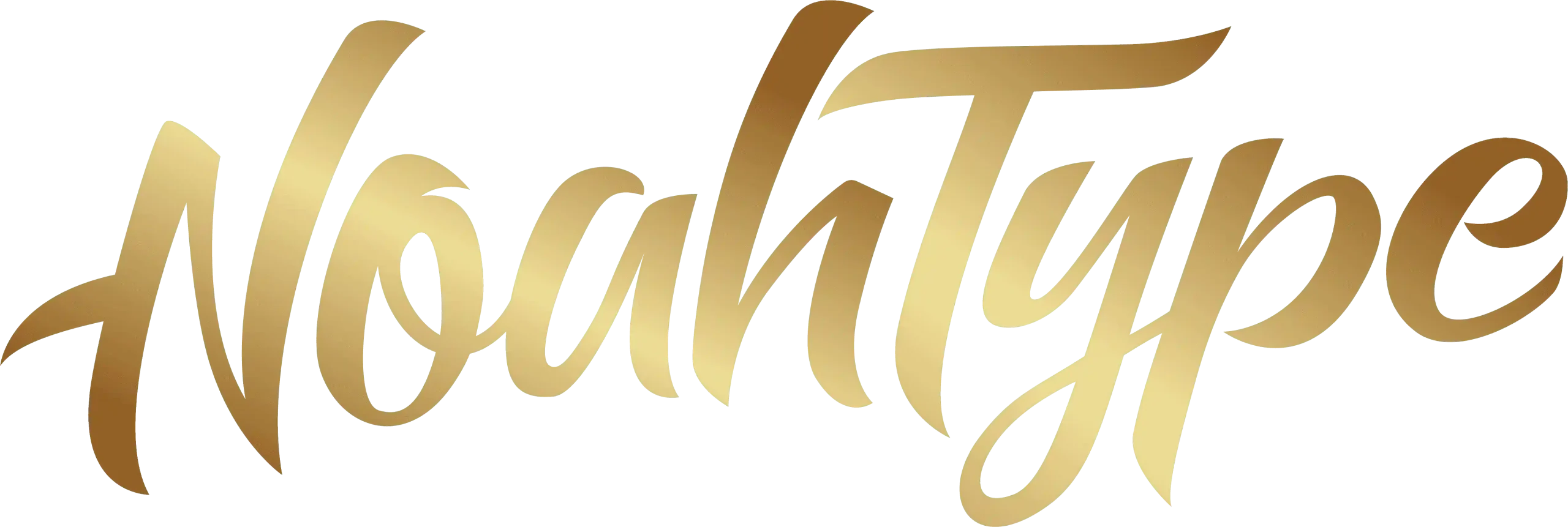How To Choose The Right Font For Video Games
Table of Contents
- Introduction
- Why font choice matters in games
- Display vs body typefaces and pairing
- Legibility & technical constraints
- Mood, genre & stylistic match
- Licensing, language & localization
- Hierarchy, contrast & UI placement
- Ready-to-use NoahType fonts for games (verified)
- Practical checklist
- Conclusion

1. Introduction
Typography in games is more than decoration — it is part of the player’s experience. A title font sets the tone; UI and subtitle fonts carry instructions. Pick poorly and you lose readability or immersion. This guide helps you choose fonts that balance style and function, and links to NoahType products actually tagged for game use.
2. Why font choice matters in games
Fonts convey mood, readability, and brand identity. They can help the player instantly understand whether a game is sci-fi, fantasy, or retro — while also delivering crucial information quickly. Industry resources stress balancing expressive display choices with practical, legible UI fonts. Monotype+1
3. Display vs body typefaces and pairing
Split your typography into roles:
- Display / Title fonts — for logos, splash screens, headings. These can be decorative.
- Body / UI fonts — for dialogue, menus, HUD. Prioritize clarity.
A common approach: choose a characterful display face for branding and a clean sans/serif for body copy so they don’t compete visually. Case studies and dev articles show this is a reliable workflow. Game Developer

4. Legibility & technical constraints
Test fonts at real in-game sizes and on target devices. Key points:
- x-height: larger x-height improves small-size readability.
- Stroke contrast: low contrast is safer on low-res screens.
- Kerning & spacing: check common letter pairs.
- Hinting & rendering: ensure the font renders crisply on consoles/mobile.
- Color & background contrast: wrap text in semi-opaque panels or use outlines when text sits on moving backgrounds.
Practical UI guides recommend limits like 50–80 characters per line and line-spacing around 130–150% for good readability. Indieklem
5. Mood, genre & stylistic match
Match the font to the game world:
- Fantasy / RPG: ornate or hand-drawn display faces.
- Sci-fi / Cyberpunk: geometric, modular sans.
- Racing / Sports: bold, condensed, speedy letterforms.
- Casual / Kids: rounded, playful designs.
Avoid clichés where possible — give familiar styles a unique twist, but never at the expense of legibility. Monotype
6. Licensing, language & localization
Two must-do items before committing:
- License check — make sure the font license covers app/game embedding and distribution (desktop licenses often differ from app/game licenses).
- Glyph coverage — confirm support for target languages and special symbols; prepare fallbacks for missing glyphs. Guidance on localization emphasizes verifying Unicode support and testing with localized strings. Game Developer+1
7. Hierarchy, contrast & UI placement
Define typographic hierarchy (titles → headings → body → captions). Use size, weight, and color to guide attention. For dynamic backgrounds, prefer solid UI panels, subtle outlines, or blurred backdrops to keep text legible. Keep button labels short and test alignment across language expansions.
8. Ready-to-use NoahType fonts for games (verified)
Below are NoahType product pages that are actually tagged game on the site — use these as real candidates for titles, HUD, or menus. (All links verified.)
- Game Tricks Sans Serif Font — a stylized display/sans suited to game headlines and retro/tech vibes.
- Game Play Sans Serif Font — playful, display-oriented; works well for casual and arcade titles.
- Cobra Game Racing Font — curved, energetic racing/display font for high-speed titles and logos.
- Game Score Racing Font — bold, athletic display font for sports/racing games and UI headings.
- Racer Game Racing Font — modern racing display face inspired by game titles; good for logos and hero text.
(If you’d like, I can create two curated combos — Title + UI — using these exact fonts so the product pages link directly to the recommended pairing.)
9. Practical checklist (ready to test)
- Pick a display and a body font.
- Test at target resolutions/devices.
- Check license types (app/game embedding allowed). Game Developer
- Verify glyph coverage & prepare fallbacks.
- Test in dynamic scenes (contrast, outline).
- Solicit quick playtests with localized text.

10. Conclusion
Choosing the right game font is a balancing act: mood + legibility + rights. Use a strong display face for identity and a functional body face for readability. The NoahType product pages above are verified game-tagged options you can test immediately.
